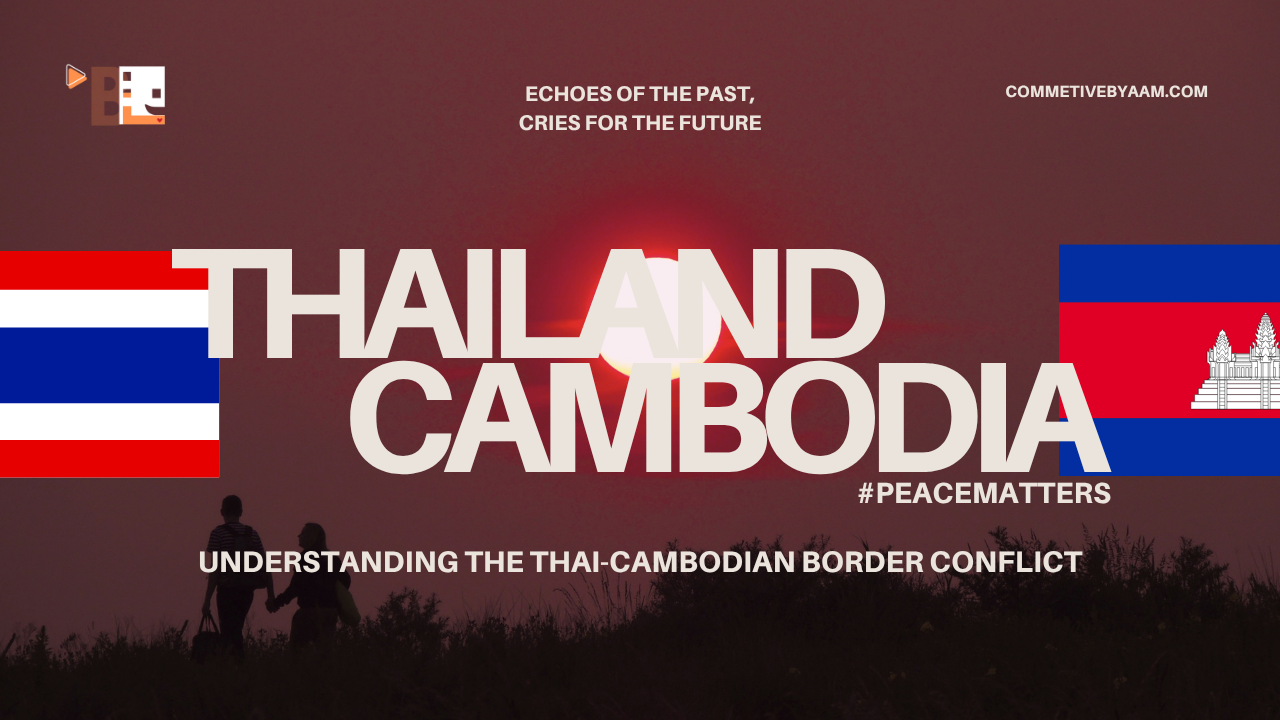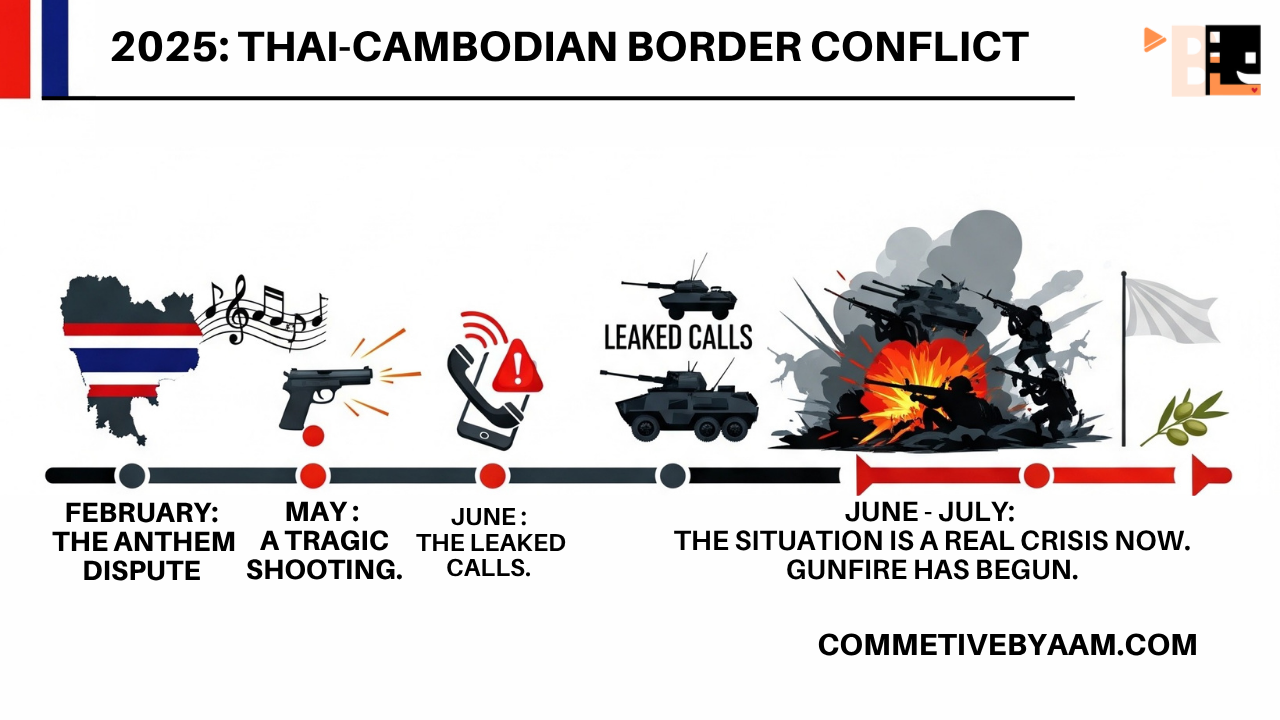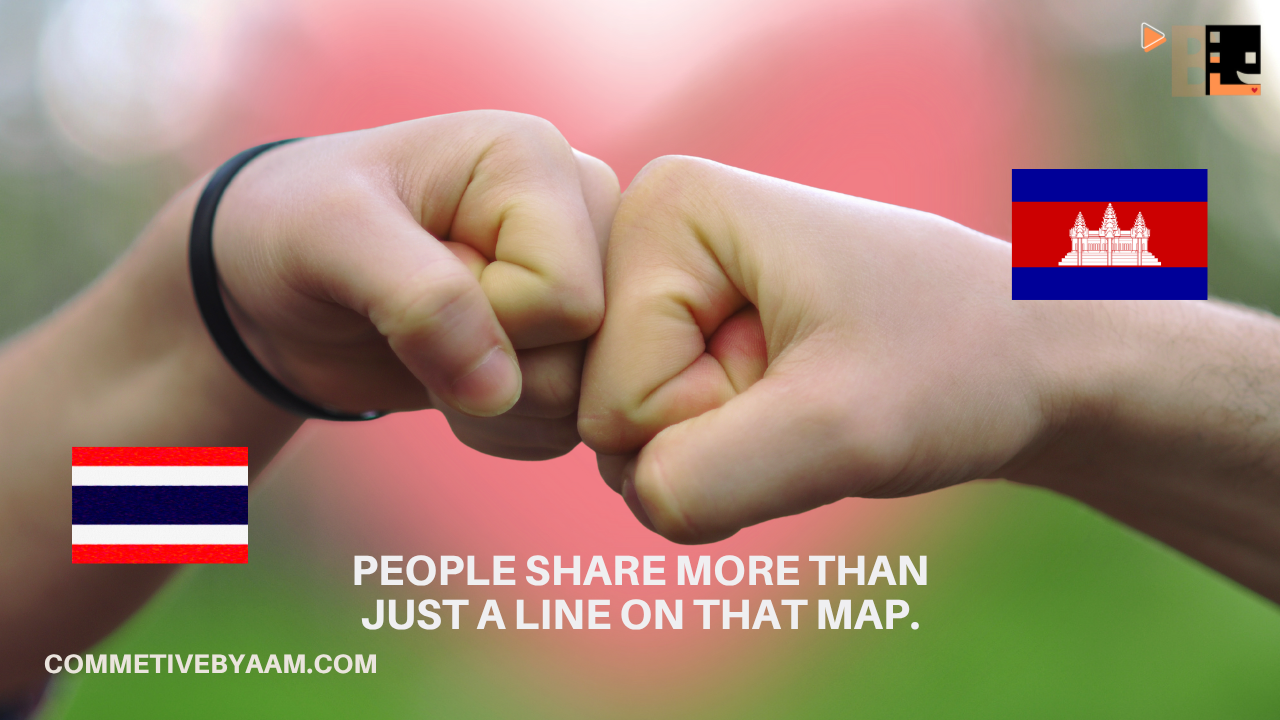Echoes of the Past, Cries for the Future: Understanding the Thai-Cambodian Border Conflict
Life Interrupted: Civilians on the Frontline
For most of the world, the border between Thailand and Cambodia is an invisible line on a map. But for the people living there, it is a daily reality a place of shared markets, intertwined families, and a common cultural heritage.
Today, it has once again become a place of fear, as the drums of conflict beat louder than they have in years.
This is not a simple story of good versus evil. It is a complex tapestry woven from ancient history, colonial-era maps, and modern politics. To understand the headlines of 2025, we must first look back in time.
The Historical Roots: A Temple on the Edge
At the heart of this long-running dispute is the Preah Vihear Temple (known in Thai as Prasat Khao Phra Wihan). This magnificent 11th-century Hindu temple complex rests atop a 525-meter cliff in the Dângrêk Mountains, offering breathtaking views of the Cambodian plains below. It is a site of immense spiritual and cultural significance to both nations.
The problem is the border itself. In 1907, during the French colonial period, French cartographers mapped the region, which was then part of French Indochina, and placed the temple within Cambodian territory. Thailand (then Siam) has long contested this, arguing that the true border should follow the natural watershed line of the mountain range, a principle that would place the temple on the Thai side.
In 1962, the International Court of Justice (ICJ) ruled that sovereignty over the temple itself belonged to Cambodia. However, the court did not definitively rule on the 4.6 square kilometers of surrounding land, leaving a legacy of ambiguity that has fueled tensions ever since. This unresolved question is the wound that refuses to heal.
What Sparked the Clashes in 2025?
While tensions have simmered for decades, a series of recent events pushed the two nations to the brink.
February 2025: The Anthem Dispute. At a joint cultural fair near the border, a Thai national anthem was mistakenly played during a Cambodian flag-raising ceremony. In a climate of heightened nationalism, what was likely a simple error was perceived as a grave insult. The incident sparked fierce online rhetoric and diplomatic protests, souring relations.
May 2025: A Tragic Shooting. A brief, confused skirmish between border patrols resulted in the death of a Cambodian soldier. Both sides claimed the other fired first. This tragic loss of life moved the conflict from rhetoric to reality, creating an atmosphere of mistrust and calls for retaliation.
June 2025: The Leaked Calls. The situation escalated dramatically in early June when audio recordings were leaked online. The calls, allegedly between senior military figures from both countries, featured aggressive posturing and discussions of military readiness. The leaks shattered what little trust remained, leading both governments to accuse the other of planning an invasion.
Timeline of a Crisis: June-July 2025
Early June: The leaked recordings surface, causing a diplomatic firestorm. Ambassadors are summoned, and both nations place their border forces on high alert.
Mid-June: Troop reinforcements are moved to the disputed area. Small-arms fire is exchanged almost daily between border outposts, and the first civilian evacuations begin in villages closest to the conflict zone.
June 28-30: The conflict escalates to artillery. Shells land on both sides of the border, causing the first confirmed military casualties of the crisis. Thousands of civilians flee their homes.
Early July: Heavy fighting erupts around the Ta Kwai and Ta Muen Thom temple ruins, west of Preah Vihear. International bodies, including ASEAN and the UN, issue urgent calls for a ceasefire.
Mid-July: After days of intense clashes, both sides agree to a fragile, temporary ceasefire to allow for diplomatic talks. However, troops remain dug in, and the situation is incredibly tense.
Late July: As of now, the ceasefire largely holds, but the peace is fragile. The rhetoric has softened, but the military hardware and the fear remain.
The Human Cost of Conflict
Beyond the political posturing and historical claims lies a devastating human reality. The cold language of geopolitics—of "disputed zones" and "strategic assets"—masks the stories of families torn apart.
Official reports speak of over a dozen soldiers killed on both sides and many more wounded. But the uncounted cost is borne by civilians. An estimated 50,000 people have been displaced, forced to abandon their homes, farms, and livelihoods.
“We’ve lived alongside each other for decades,” said a schoolteacher evacuated from a village in Thailand's Ubon Ratchathani province, her voice trembling. “My students play with children from the other side. We don’t want war. We just want tomorrow to be safe.”
They now shelter in temporary evacuation centers, schools, and temples, uncertain of when—or if—they can return. Farmers cannot tend their rice paddies. Children are traumatized by the sound of shelling. For them, the border is not a line on a map; it is their entire world, and that world is now shattered.
A uniform does not erase the son, the husband, or the friend beneath it. The young soldiers on both sides are caught in a conflict fueled by narratives crafted far from the front lines.
The Political Context: A Rivalry of Families
The conflict is further complicated by the political dynamics in both Bangkok and Phnom Penh. The relationship between the ruling Pheu Thai party in Thailand, long associated with the Shinawatra family, and the Cambodian People's Party, led by the Hun family for decades, has been marked by periods of both close cooperation and intense rivalry. Domestic political pressures in both nations often lead leaders to take a hardline nationalist stance on the border issue to rally domestic support, turning a bilateral issue into a tool of internal politics.
Reflection & Message of Peace
The stones of Preah Vihear have stood for a thousand years. They have witnessed the rise and fall of empires, seasons of peace, and moments of war. They stand as a silent testament to a shared heritage that predates modern nations and the maps that divide them.
Across this border, people share more than just a line on that map. They share similar faiths, foods, traditions, and family ties. A farmer in Thailand's Si Sa Ket province and a farmer in Cambodia's Preah Vihear province want the same things: for their children to be safe, for their crops to grow, and to live in peace with their neighbors.
War offers no solutions. It only digs deeper graves and builds higher walls of bitterness for the next generation to inherit.
The path to peace does not lie in determining who owns which rock or whose flag flies higher. It lies in recognizing our shared humanity.
For those watching from around the world, do not turn away. Your attention is a powerful force for peace.
Seek to Understand, Not to Judge. Look past the nationalist headlines and listen to the voices of ordinary Thais and Cambodians who are calling for peace.
Support Humanitarian Aid. Donate to credible, non-partisan organizations providing food, shelter, and medical care to displaced families on both sides of the border.
Amplify Voices of Peace. Share messages from peace-builders, not war-mongers. Promote dialogue and de-escalation on social media.
Encourage Diplomacy. Urge your own governments to support a peaceful, diplomatic resolution through established regional channels like ASEAN and international bodies like the United Nations.





